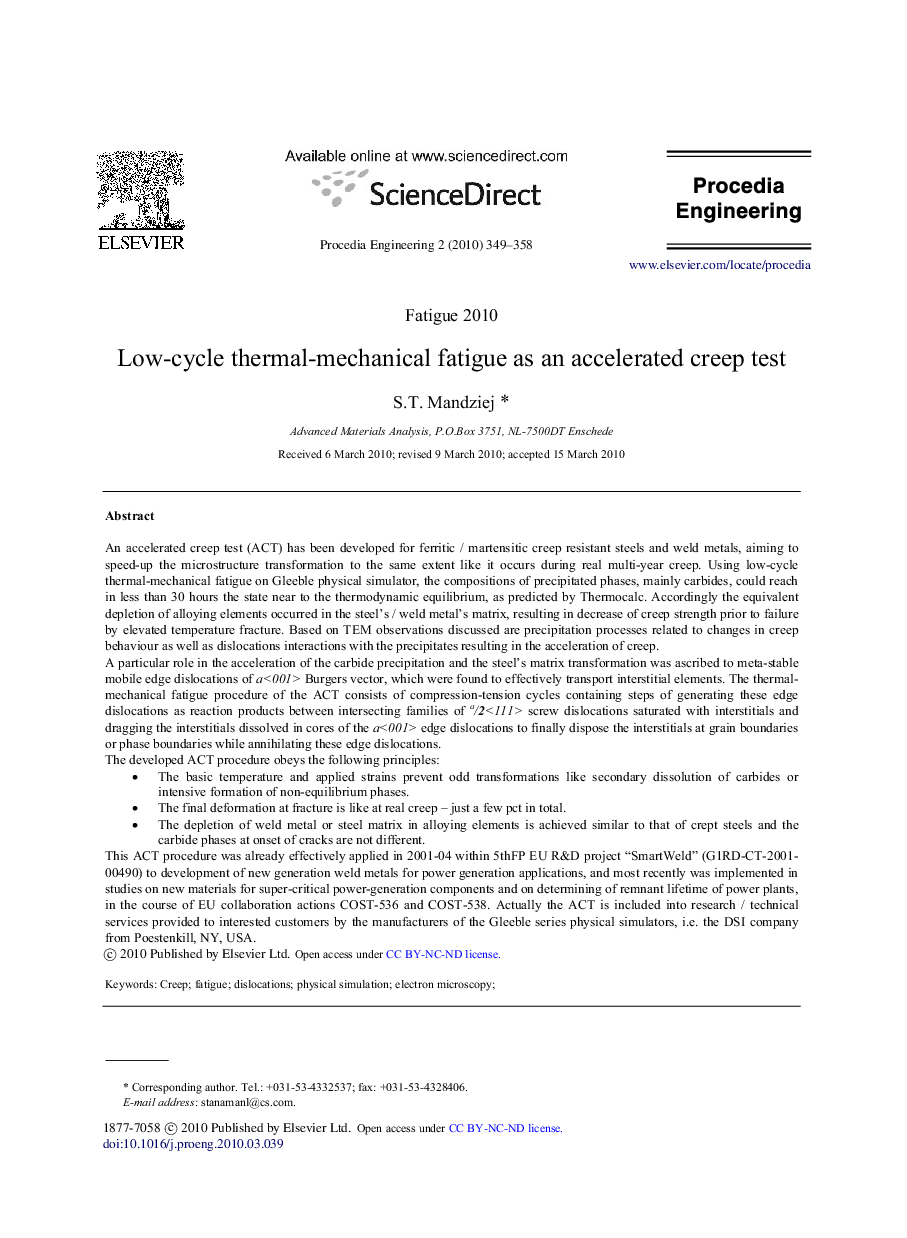| کد مقاله | کد نشریه | سال انتشار | مقاله انگلیسی | نسخه تمام متن |
|---|---|---|---|---|
| 864626 | 909628 | 2010 | 10 صفحه PDF | دانلود رایگان |

An accelerated creep test (ACT) has been developed for ferritic/martensitic creep resistant steels and weld metals, aiming to speed-up the microstructure transformation to the same extent like it occurs during real multi-year creep. Using low-cycle thermal-mechanical fatigue on Gleeble physical simulator, the compositions of precipitated phases, mainly carbides, could reach in less than 30 hours the state near to the thermodynamic equilibrium, as predicted by Thermocalc. Accordingly the equivalent depletion of alloying elements occurred in the steel’s / weld metal’s matrix, resulting in decrease of creep strength prior to failure by elevated temperature fracture. Based on TEM observations discussed are precipitation processes related to changes in creep behaviour as well as dislocations interactions with the precipitates resulting in the acceleration of creep. A particular role in the acceleration of the carbide precipitation and the steel’s matrix transformation was ascribed to meta-stable mobile edge dislocations of a〈001〉 Burgers vector, which were found to effectively transport interstitial elements. The thermalmechanical fatigue procedure of the ACT consists of compression-tension cycles containing steps of generating these edge dislocations as reaction products between intersecting families of a/2〈111〉 screw dislocations saturated with interstitials and dragging the interstitials dissolved in cores of the a〈001〉 edge dislocations to finally dispose the interstitials at grain boundaries or phase boundaries while annihilating these edge dislocations. The developed ACT procedure obeys the following principles:
• The basic temperature and applied strains prevent odd transformations like secondary dissolution of carbides or intensive formation of non-equilibrium phases.
• The final deformation at fracture is like at real creep — just a few pct in total.
• The depletion of weld metal or steel matrix in alloying elements is achieved similar to that of crept steels and the carbide phases at onset of cracks are not different. This ACT procedure was already effectively applied in 2001-04 within 5thFP EU R&D project “SmartWeld” (G1RD-CT-200100490) to development of new generation weld metals for power generation applications, and most recently was implemented in studies on new materials for super-critical power-generation components and on determining of remnant lifetime of power plants, in the course of EU collaboration actions COST-536 and COST-538. Actually the ACT is included into research/technical services provided to interested customers by the manufacturers of the Gleeble series physical simulators, i.e. the DSI company from Poestenkill, NY, USA.
Journal: Procedia Engineering - Volume 2, Issue 1, April 2010, Pages 349-358